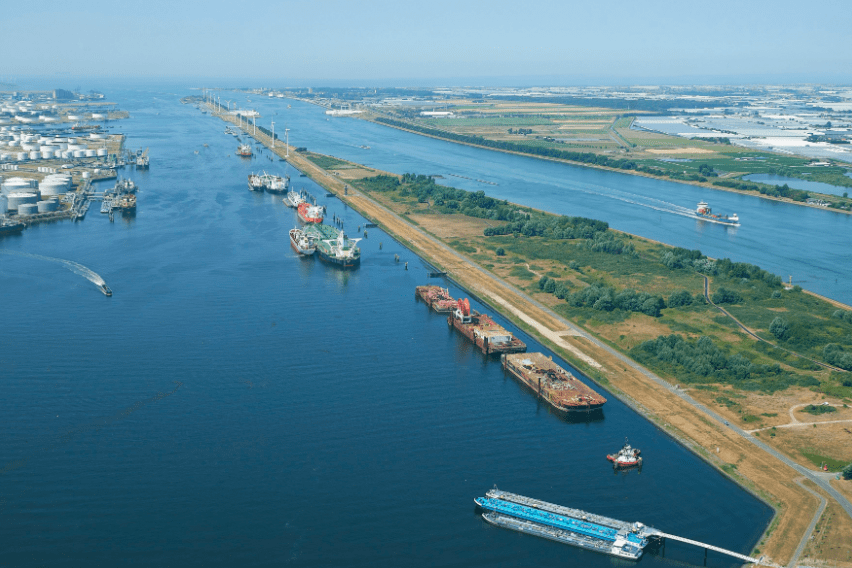
Populariteit boord-boordoverslag leidt tot nieuwe palenset

Steeds meer schepen maken gebruik van de overslag op palen in het Calandkanaal. Het Havenbedrijf Rotterdam bestelt daarom een nieuwe palenset.
In 2015 verving het havenbedrijf de boeienspannen langs de Landtong Rozenburg in het Calandkanaal voor palen, waar schepen aan boord-boordoverslag kunnen doen. Het havenbedrijf ziet de palen als een aantrekkelijke toevoeging voor de overslagmogelijkheden op de terminals. Boord-boordoverslag (of ship-to-ship-transfers, STS) wordt gezien als veiliger dan op open zee, efficiënt en risicovrij.
Toename
De geboden faciliteit blijkt populair. Het havenbedrijf meldt dat regelmatig alle plaatsen aan de palen bezet zijn. Tussen 2014 en 2019 nam de overslag op palen en boeien in de Rotterdamse haven toe van 16 naar 20 miljoen ton.
Nieuwe palenset
Alle reden dus om de bestaande palen uit te breiden. Bij het ontwerp van de eerste palen in 2015 is er al rekening mee gehouden om die uit te breiden met een nieuwe set. Ook krijgen twee andere palen extra afmeerpalen om de capaciteit te vergroten. De Klerk BV uit Werkendam zal de nieuwe palen dit jaar plaatsen.
Ladingstromen
Het Havenbedrijf Rotterdam verwacht met de uitbreiding nieuwe ladingstromen aan te trekken. Het denkt zo ook zijn positie in de segmenten ruwe olie, olieproducten en LNG te versterken.
Zie ook: Slimme bolder meet spanning op de trossen
English translation
Popularity STS leads to new set of piles
More and more ships are making use of the transhipment on board piles in the Calandkanaal. The Port of Rotterdam Authority is therefore ordering a new set of piles.
In 2015, the Port Authority replaced the buoy spans along Landtong Rozenburg in the Calandkanaal for bollards, where ships can perform ship-to-ship transhipment (STS). The Port Authority regards the bollards as an attractive addition to the transhipment possibilities at the terminals. STS is seen as safe, efficient and risk-free.
Regularly occupied
The facility offered is proving popular. The Port Authority reports that all places at the terminals are regularly occupied. Between 2014 and 2019, transhipment on bollards and buoys in the Port of Rotterdam increased from 16 to 20 million tonnes.
New set
All the more reason, therefore, to expand the existing piles with a new set. When the first piles were designed in 2015, consideration was already given to expanding them with a new set. Two other bollards will also receive additional mooring posts to increase capacity. De Klerk BV from Werkendam will install the new bollards this year.
Cargo flows
The Port of Rotterdam Authority expects the expansion to attract new cargo flows. It also expects to strengthen its position in the segments of crude oil, oil products and LNG.









